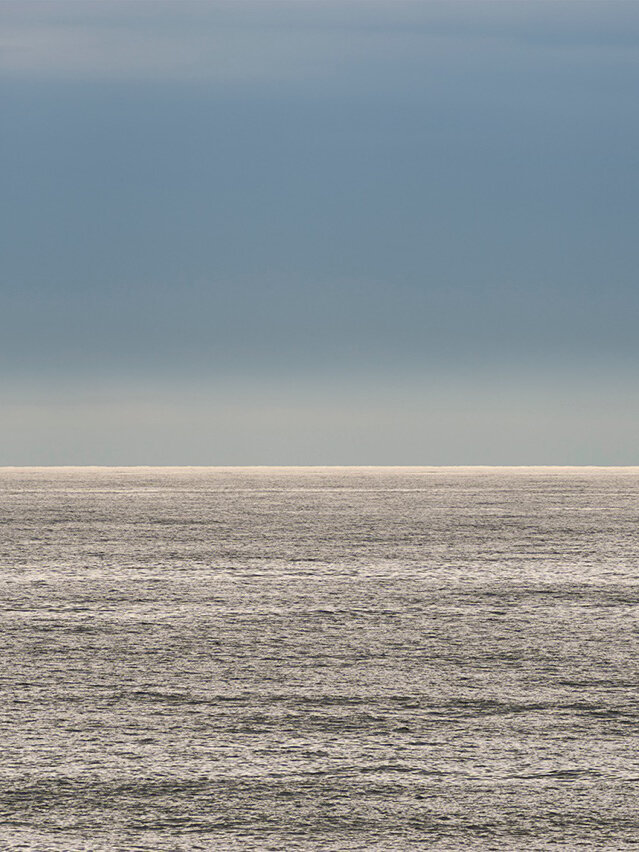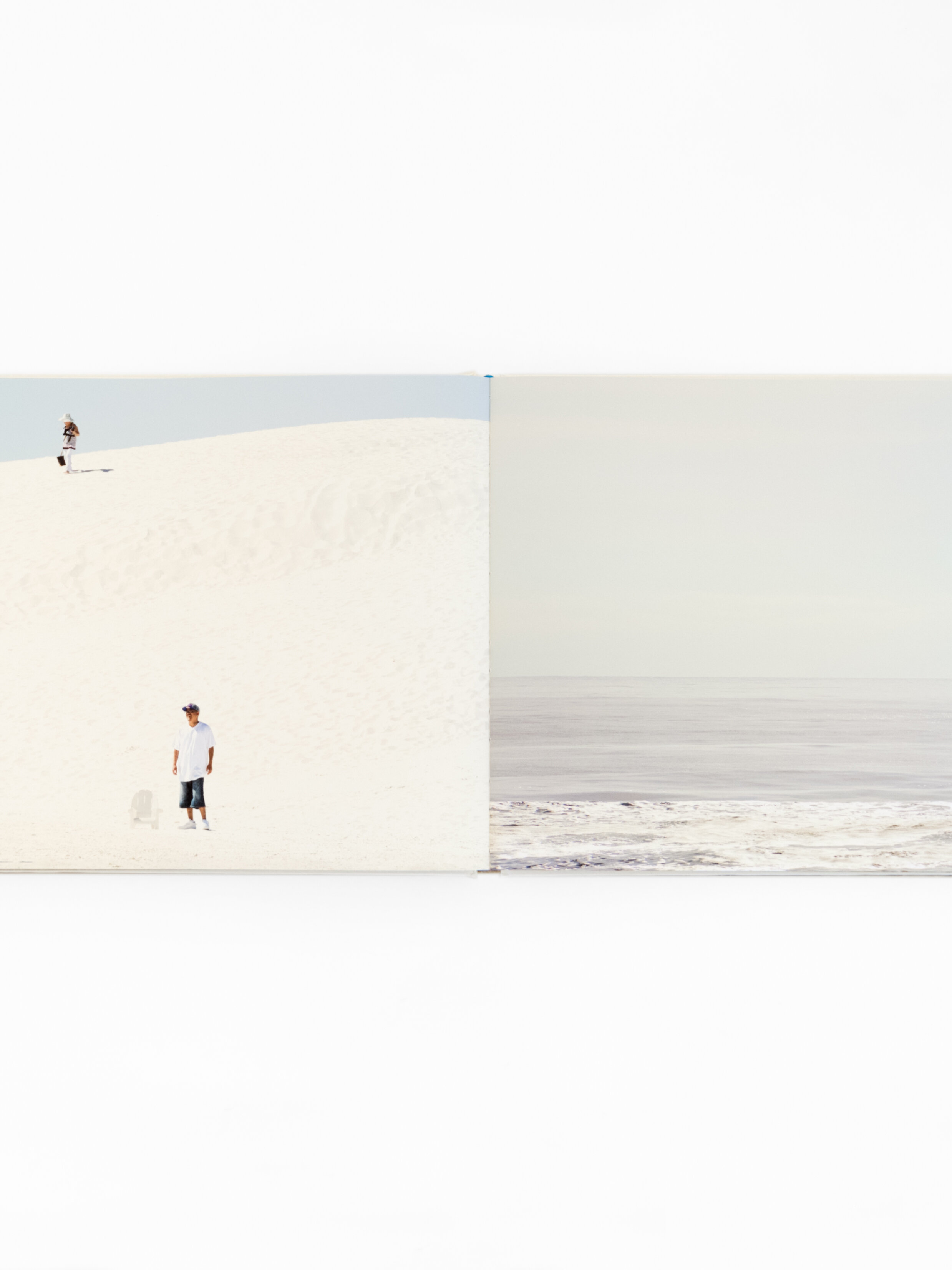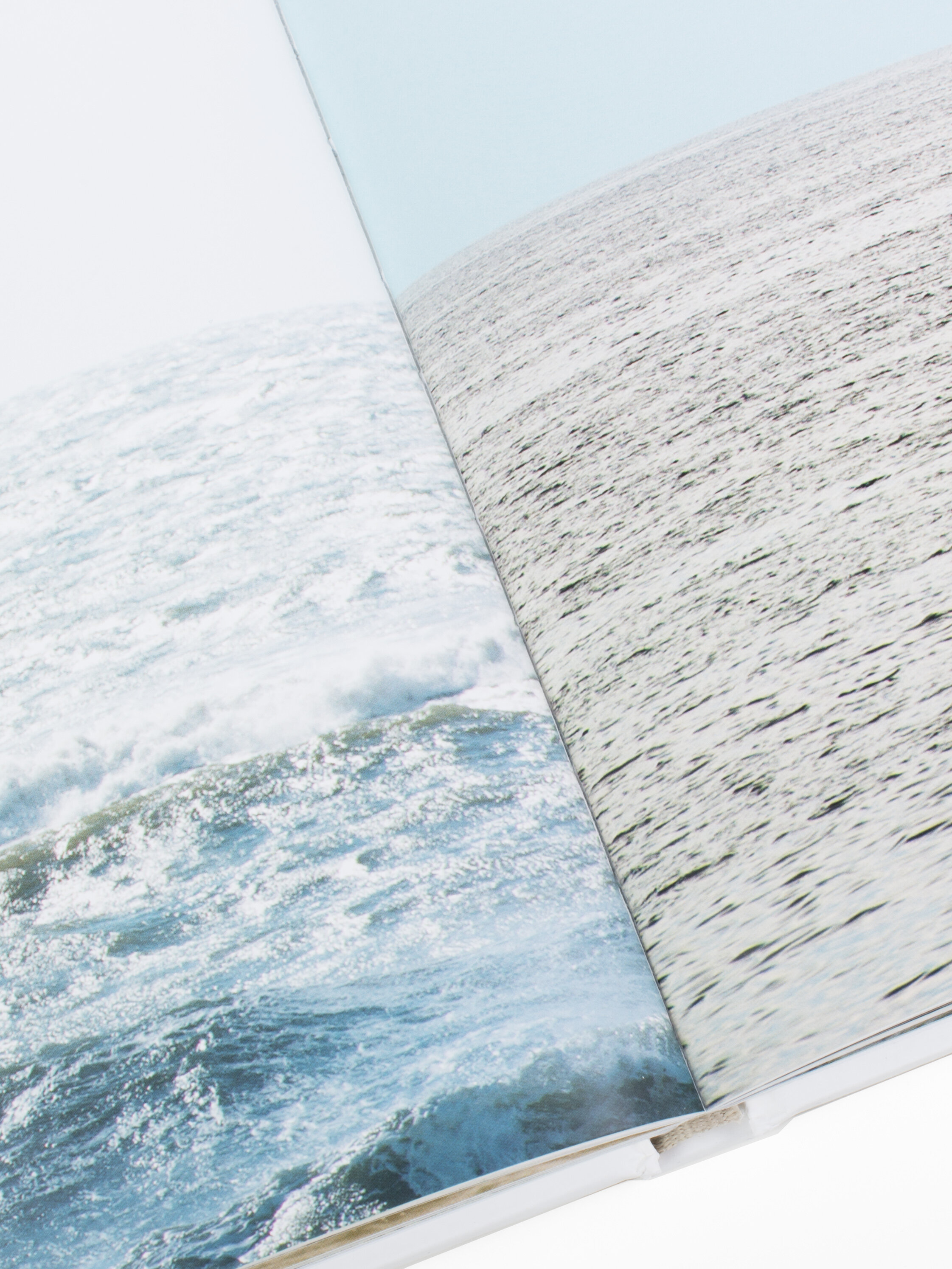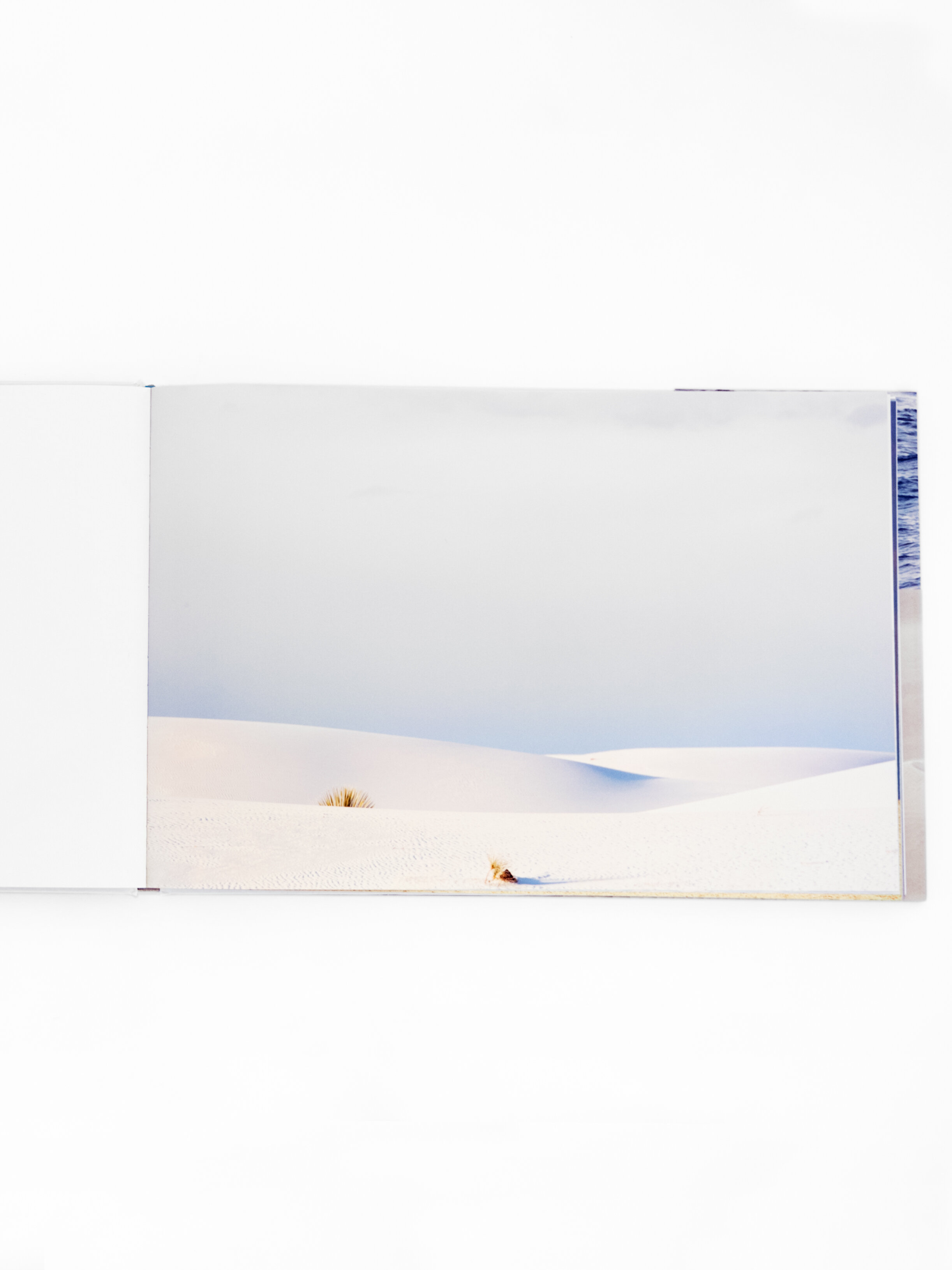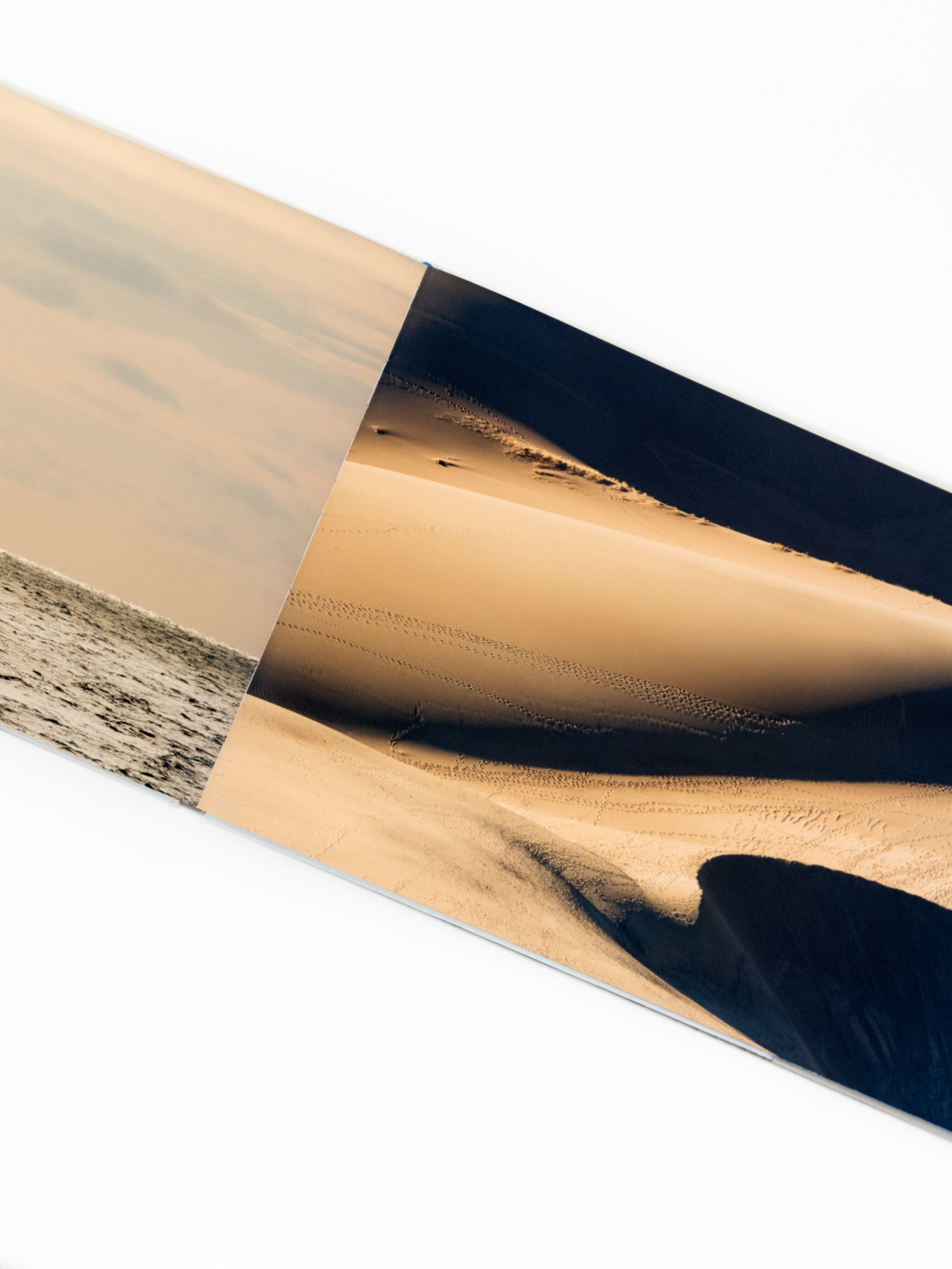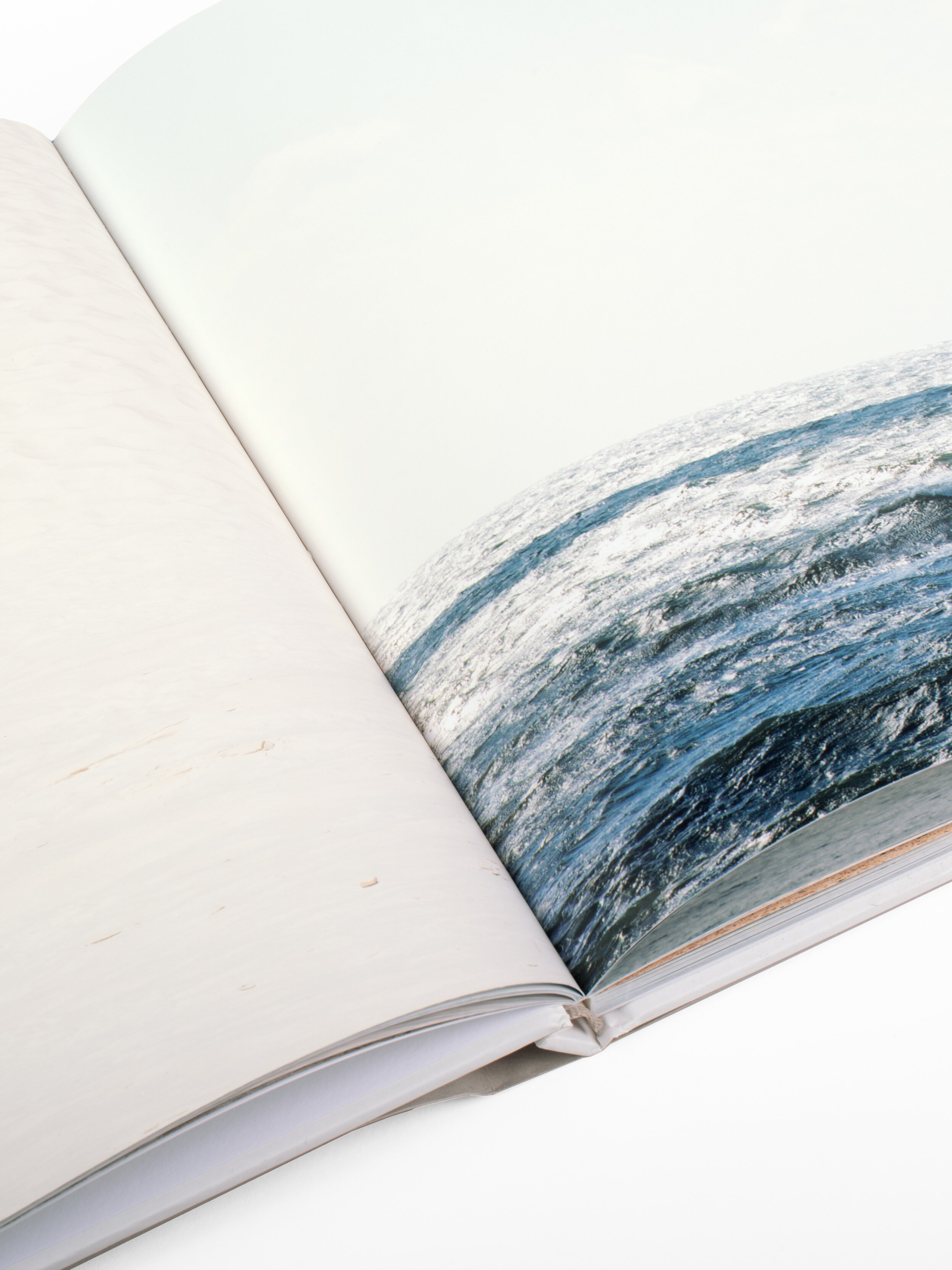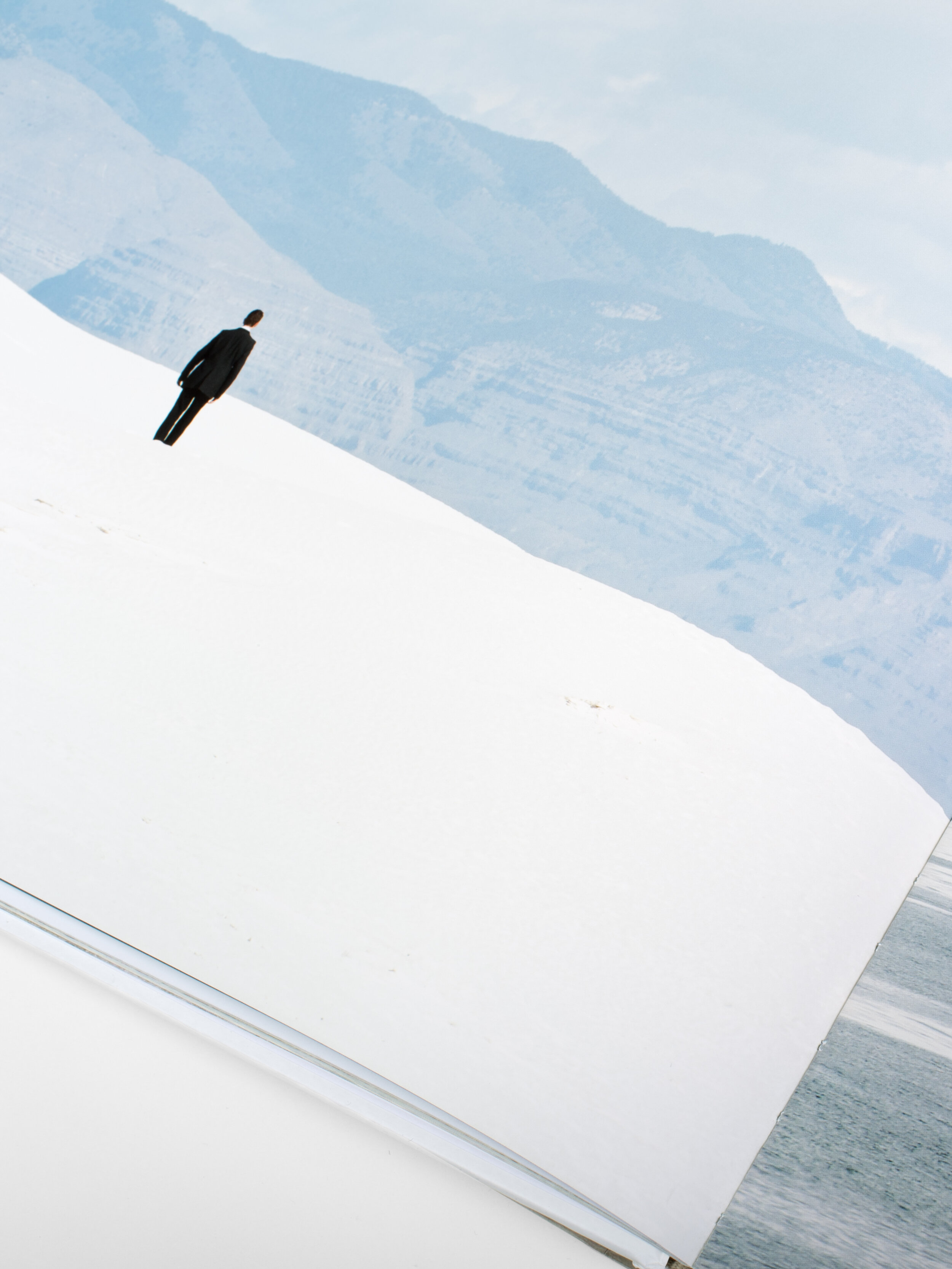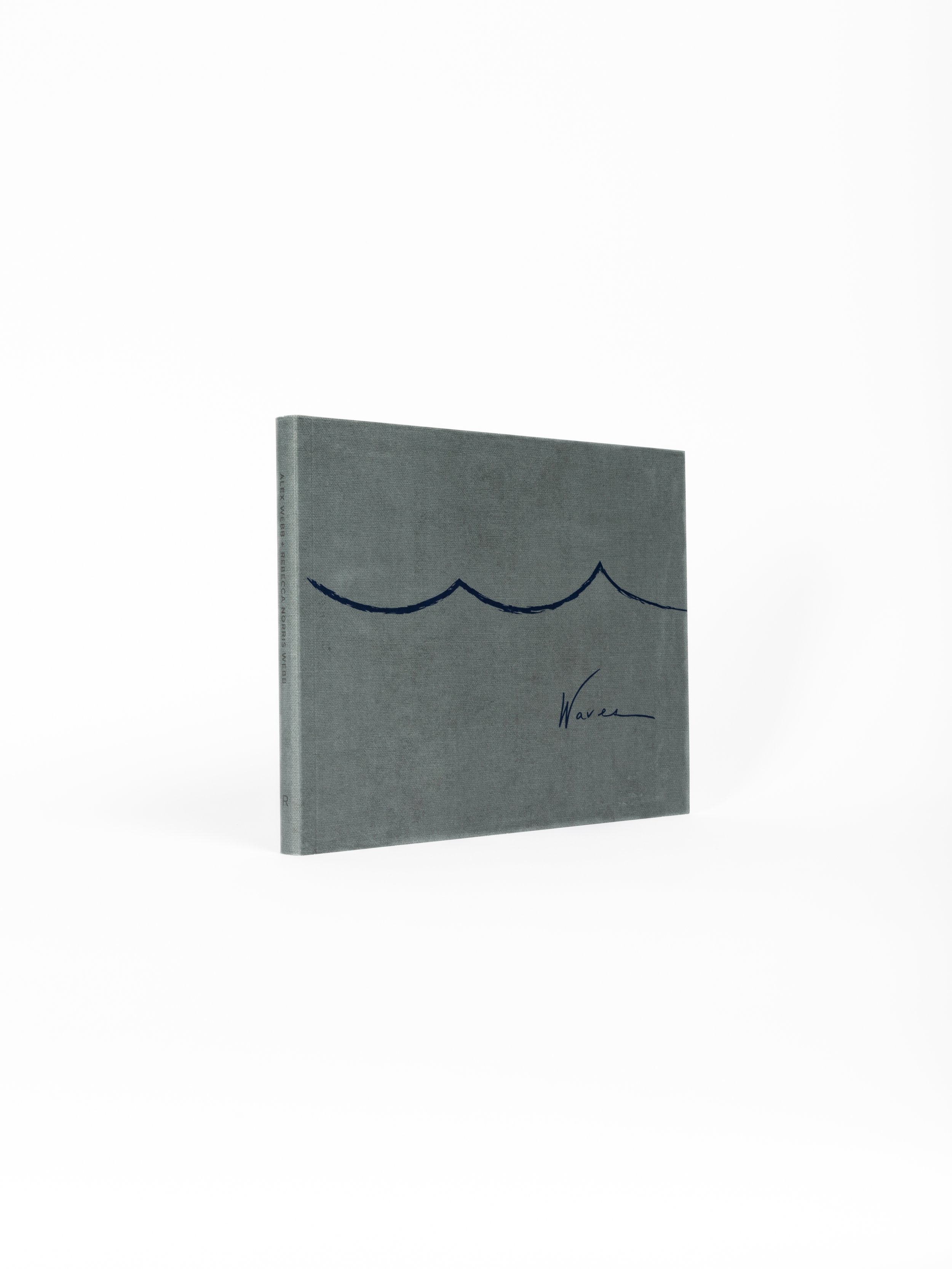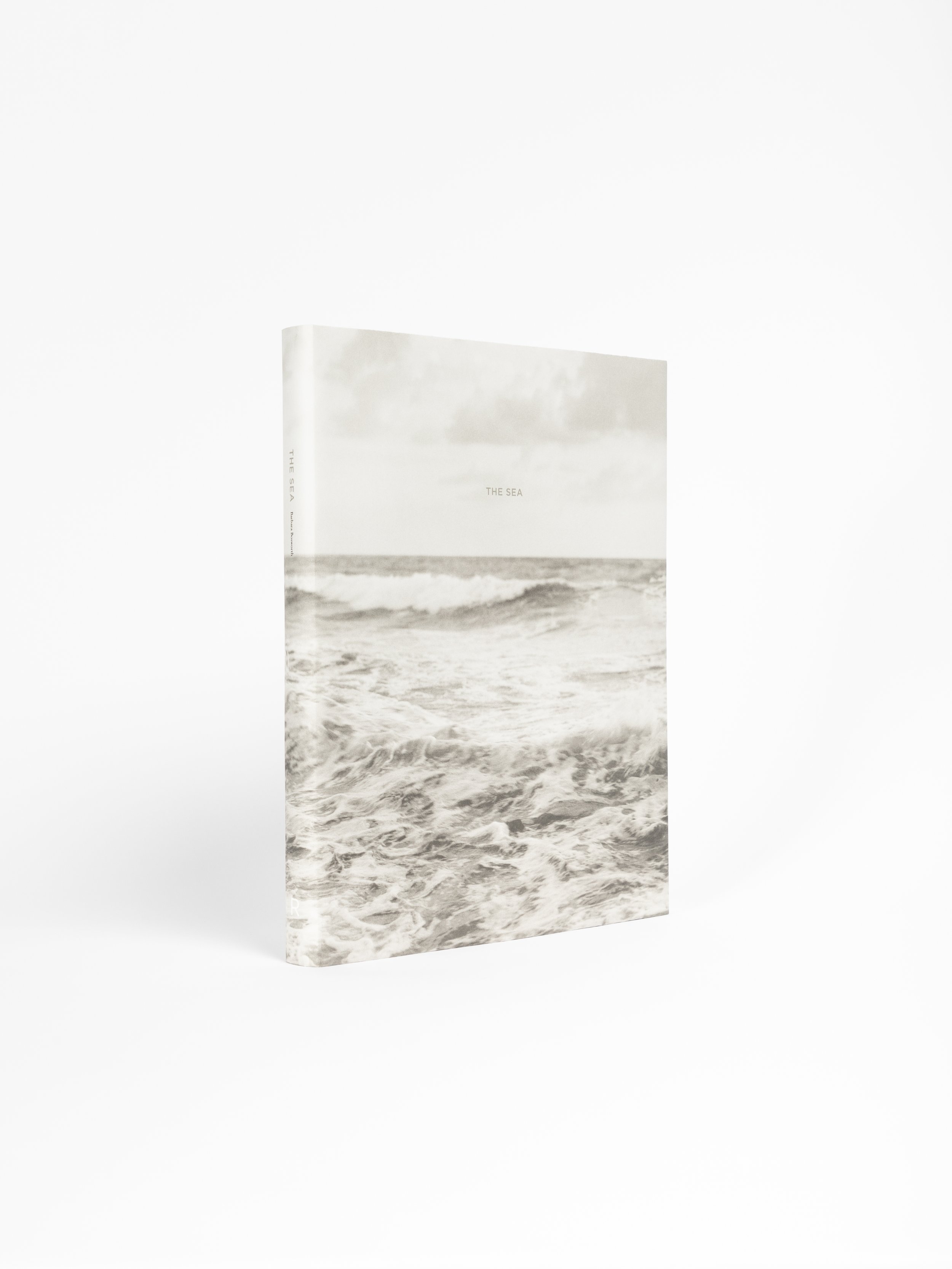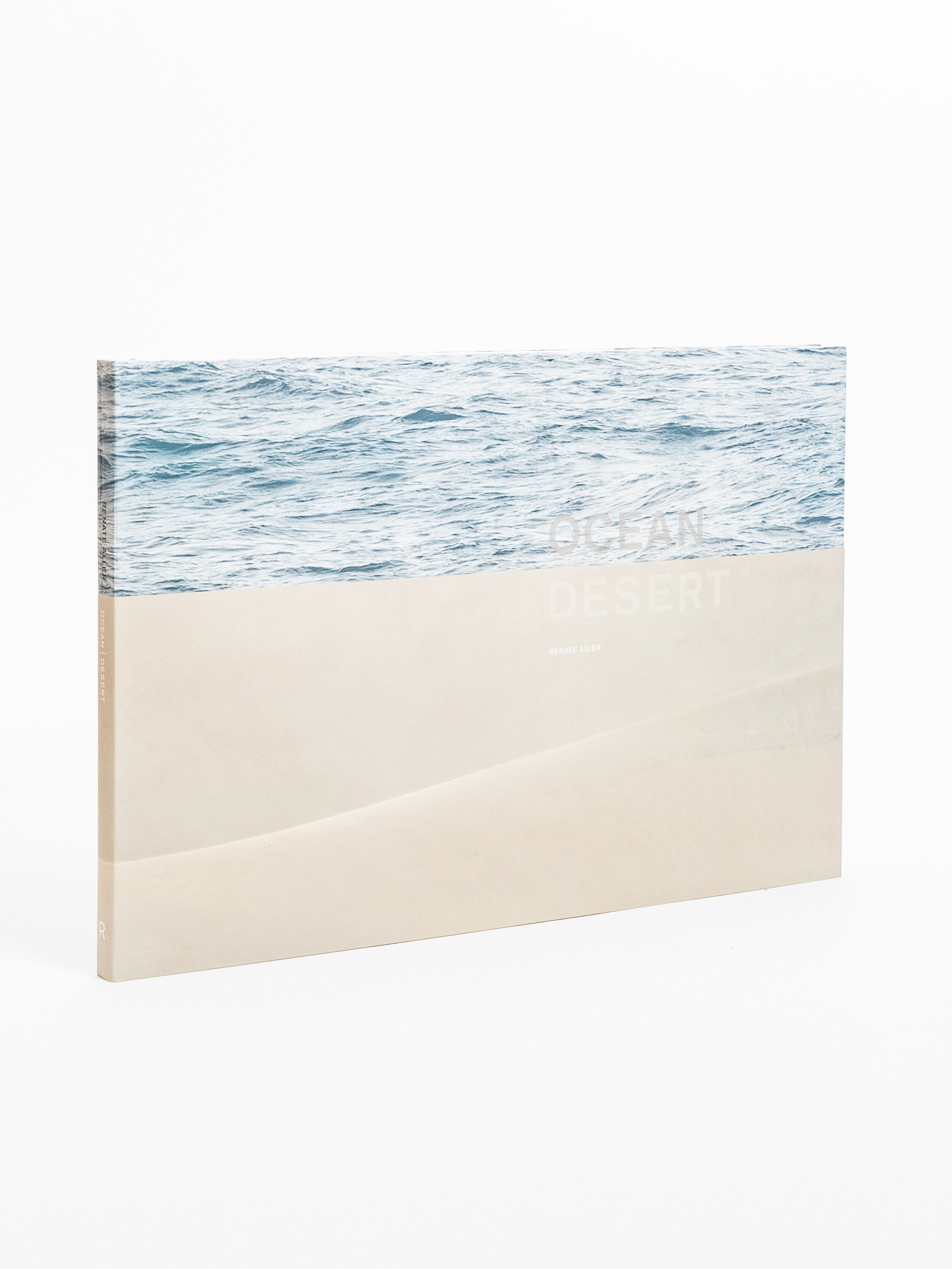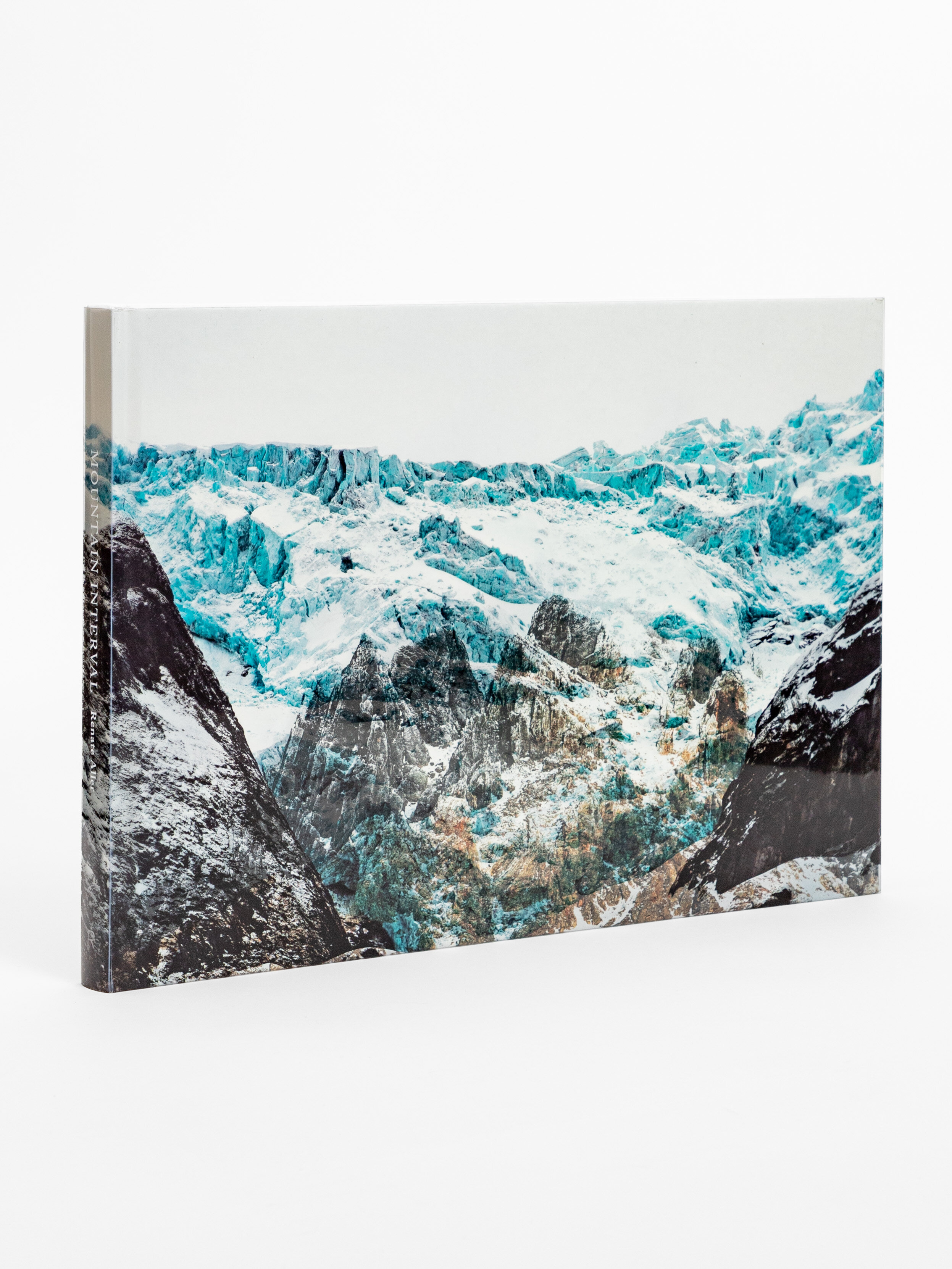Renate Aller: Ocean | Desert
Simultaneous, multiple activities on sloping sand hills appear as if layers of different people and activities were choreographed next to rolling waves of the sea.
German-born photographer Renate Aller’s Ocean | Desert is an extension of the ongoing series and sold-out book Oceanscapes (Radius Books, 2010). Aller has continued to make images of the ocean from a single vantage point, for which she is internationally known; for the last several years, she has also photographed sand dunes in New Mexico and Colorado.
In Ocean | Desert, Aller pairs the resulting images in a fascinating new series that continues her investigation into the relationship between Romanticism, memory, and landscape in the context of our current socio-political awareness. There is both a visual and visceral relationship between the two bodies of work, as though the minerals of the sand dunes carry the memory of the ocean waters that were there millions of years before. The desert images also capture visitors to the dunes, who engage in beach activities far away from any large body of water.
Simultaneous, multiple activities on sloping sand hills appear as if layers of different people and activities were choreographed next to rolling waves of the sea.
German-born photographer Renate Aller’s Ocean | Desert is an extension of the ongoing series and sold-out book Oceanscapes (Radius Books, 2010). Aller has continued to make images of the ocean from a single vantage point, for which she is internationally known; for the last several years, she has also photographed sand dunes in New Mexico and Colorado.
In Ocean | Desert, Aller pairs the resulting images in a fascinating new series that continues her investigation into the relationship between Romanticism, memory, and landscape in the context of our current socio-political awareness. There is both a visual and visceral relationship between the two bodies of work, as though the minerals of the sand dunes carry the memory of the ocean waters that were there millions of years before. The desert images also capture visitors to the dunes, who engage in beach activities far away from any large body of water.
Simultaneous, multiple activities on sloping sand hills appear as if layers of different people and activities were choreographed next to rolling waves of the sea.
German-born photographer Renate Aller’s Ocean | Desert is an extension of the ongoing series and sold-out book Oceanscapes (Radius Books, 2010). Aller has continued to make images of the ocean from a single vantage point, for which she is internationally known; for the last several years, she has also photographed sand dunes in New Mexico and Colorado.
In Ocean | Desert, Aller pairs the resulting images in a fascinating new series that continues her investigation into the relationship between Romanticism, memory, and landscape in the context of our current socio-political awareness. There is both a visual and visceral relationship between the two bodies of work, as though the minerals of the sand dunes carry the memory of the ocean waters that were there millions of years before. The desert images also capture visitors to the dunes, who engage in beach activities far away from any large body of water.
YOU MAY ALSO LIKE
-
Photography by Renate Aller
Text by Janet DeesHardcover with jacket
16.75 x 11.25 inches
136 pages / 104 images
ISBN: 9781934435816Trade $75 / Now RARE $150
-
Born in Germany, Renate Aller (b. 1960) lives and works in New York. Mountain Interval and the artist’s previous projects Ocean and Desert, dicotyledon, and the long term project Oceanscapes – One View – Ten Years support the artist’s investigation into the relationship between Romanticism, memory and landscape – in the context of our current socio-political awareness.
Her works are in the collections of corporate institutions, private collectors and museums, including Lannan Foundation (New Mexico), National Gallery of Art (DC), Yale University Art Gallery (Connecticut), George Eastman House (New York), New Britain Museum of American Art (Connecticut), Hamburger Kunsthalle, (Germany), Chazen Museum of Art (Wisconsin) Parrish Art Museum (New York), Musée des Beaux-Arts (Switzerland), and New-York Historical Society Museum.


